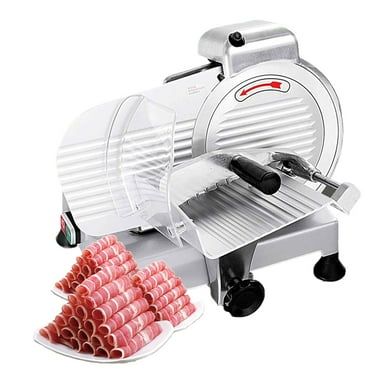Introduction of Maintainance Meat Slicer
Properly cleaning and maintaining your meat slicer is crucial for ensuring the longevity of the appliance and preventing the risk of contamination and foodborne illness. A meat slicer is a valuable investment for any kitchen, allowing for precise and efficient slicing of meats, cheeses, and vegetables. However, if not properly cleaned and maintained, it can become a breeding ground for bacteria and other microorganisms. In this article, we will explore the essential steps to keep your meat slicer in top condition.
Importance of Immediate Cleaning Your Meat Slicer
To maintain your meat slicer and keep it free from bacteria, it is essential to clean it immediately after each use. Start by wiping down both the exterior and interior surfaces with a damp cloth. Pay special attention to areas where food residue tends to accumulate, as these can harbor harmful microorganisms. Additionally, make sure to remove any remaining food particles from the slicer’s blades and gears, as these can attract bacteria and lead to contamination.
Regular Deep Cleaning Meat Slicer
In addition to immediate cleaning, a deeper clean of the meat slicer should be performed regularly. This involves disassembling the appliance and soaking its various parts in warm, soapy water. Use a soft-bristled brush to scrub away any stubborn stains or residue. After washing, dry each part thoroughly with a clean towel before reassembling the slicer. This deep cleaning ensures that your slicer remains hygienic and safe to use.
Sharpening the Blades of Meat Slicer
Regularly sharpening the blades of your meat slicer is another critical aspect of its maintenance. Dull blades can result in uneven slicing and create an environment where bacteria can thrive. By sharpening the blades consistently, you not only enhance the slicer’s performance but also help prevent the buildup of harmful microorganisms. A sharp blade provides cleaner cuts and reduces the risk of cross-contamination.
Inspecting for Wear and Tear
Regular inspections of your meat slicing for any signs of wear and tear are necessary to maintain its functionality and safety. Look for cracks or damage on the appliance’s exterior and interior surfaces, and check that all moving parts are operating smoothly. Promptly replace any damaged or worn-out components to prevent malfunctions and accidents. Keeping your slicer in good repair will ensure it continues to operate efficiently.
Proper Storage of Meat Slicer
Proper storage is crucial when the meat slicing is not in use. Store it in a dry and clean environment, away from direct sunlight and heat sources. Cover the slicer with a clean cloth or plastic wrap to protect it from dust and contaminants that may settle on its surfaces. By following these storage guidelines, you can extend the lifespan of your slicer and maintain its cleanliness.
Conclusion of Maintainance Meat Slicer
In conclusion, properly cleaning and maintaining your meat slicer is vital for ensuring its longevity and preventing contamination and foodborne illness. By adhering to the steps outlined above—immediate cleaning, regular deep cleaning, sharpening blades, inspecting for wear and tear, and proper storage—you can keep your meat slicing in excellent working condition. This attention to maintenance will ensure your slicer continues to provide precise and efficient slicing for years to come.

